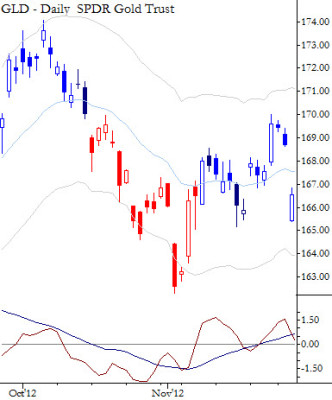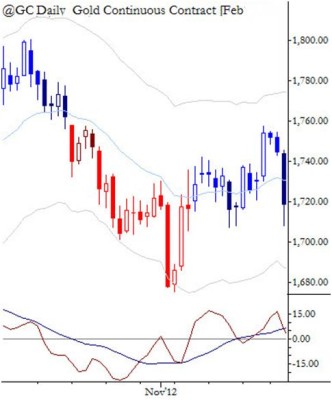A Problem with ETF Charts
One possible issue with "overnight" gaps affecting short-term patterns on ETP charts. Consider carefully whether you should be using futures or cash instead.
[dc]O[/dc]ne of the key developments in markets over the past decade has been the incredible rise in the number of Exchange Traded Products that essentially give stock traders and investors access to other asset classes. Is this a good thing? Generally speaking, probably so, though people must remember what they are trading. Just because it looks like a stock on your screen, does not mean it actually is a stock. Hiding behind those three or four letters in the ticker may actually be a commodity, a stock index of an entire nation or region subject to currency issues, regulatory and political risks, or some exotic basket of derivatives (or, in some cases, derivatives of derivatives.) These things trade differently than stocks, and you are facing a different kind of trader on the other side of the trade. We've certainly progressed far beyond the simple index days of SPY and QQQ into a whole brave new world.
These are issues we will return to in future posts, but today I want to look at the most obvious issue with ETF's (technically, this post should probably always refer to ETP (products), but I will lapse into ETF-language sometimes): ETF's trade during normal domestic trading hours for stocks (9:30-4:00, New York time), but you may be trading something that does the majority of its volume outside of those hours. In some cases, the primary market for the instrument may actually be closed when you can trade it! This explains the large gaps on ETP's such as FXY, EWH, EWJ, and many others. This creates obvious risk management concerns when you think about the possibility of a large gap past your stop, but I think there is another problem worth considering.

I've seen too many people doing technical analysis on ETP's such as GLD, SLV, and USO. On the weekly timeframe, maybe this is ok if you can understand how issues such as the roll might affect the chart, but it is disastrous for anyone using short-term candlestick patterns. For a specific example, take a look at the last candle on these two charts. One is a continuous contract of Gold futures, and the other is GLD. Note that the last candle on GLD is strong to possibly very positive—a large gap down opening which was reversed through the session as the market rallied to close higher. However, the chart of the futures tells a very different story—a large filled candle with a moderately-sized shadow underneath, indicating that Gold sold off strongly during the day, but rallied off the lows.

If you use ETF's for technical analysis, do you understand how to correct for these differences? Would it maybe be more constructive to use futures for analysis and then go the ETF for specific price levels, if you are going to be trading the ETF? If you don't do this, why not? (Make sure your answer here isn't, "I don't have futures data. If you're trading GLD, you're trading futures.) At the very least, consider the issues and make sure you're always working to see beyond the chart. Remember, the chart is only the representation of the market, not the market itself. The chart is a tool for helping us to understand how the story of supply and demand plays out in the price changes of a market or an asset, nothing more and nothing less, and our tools will only guide us if we truly understand them.



